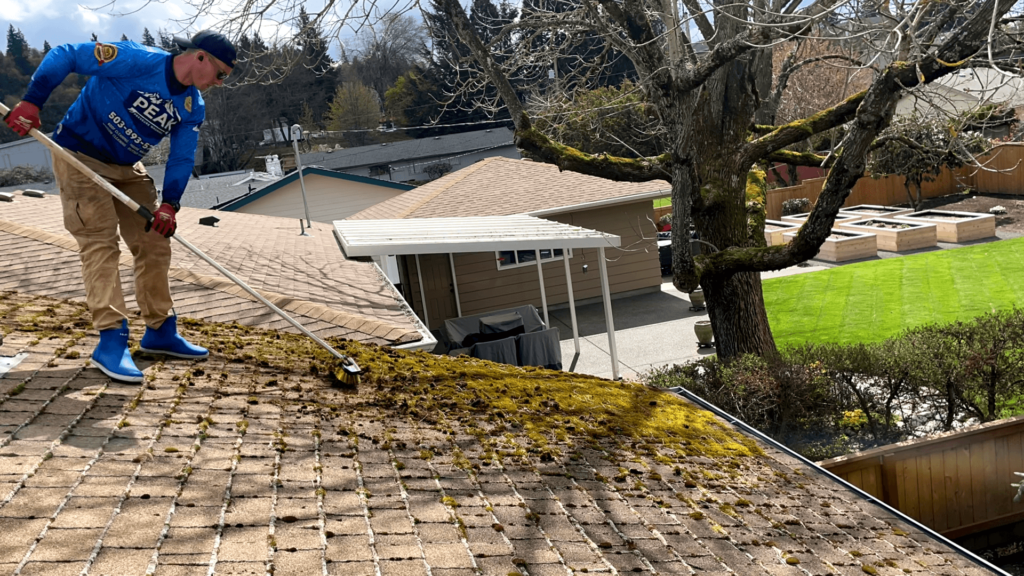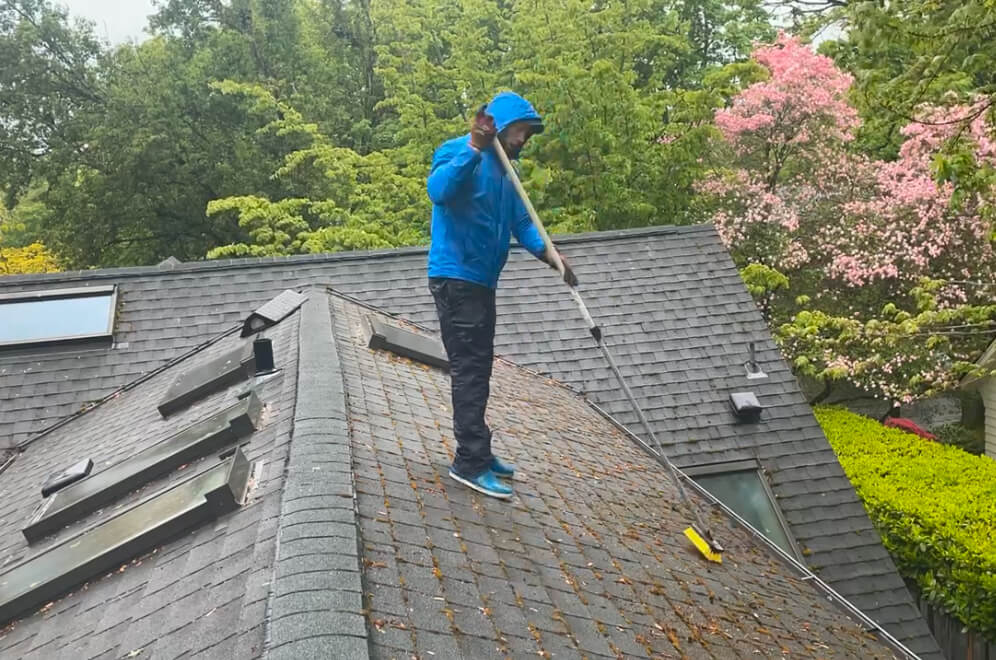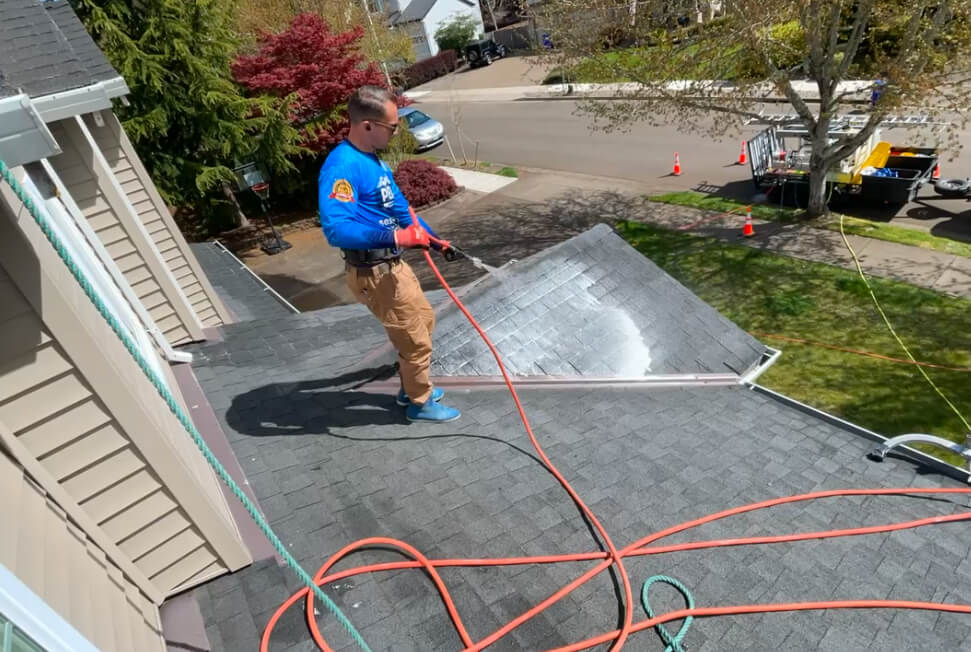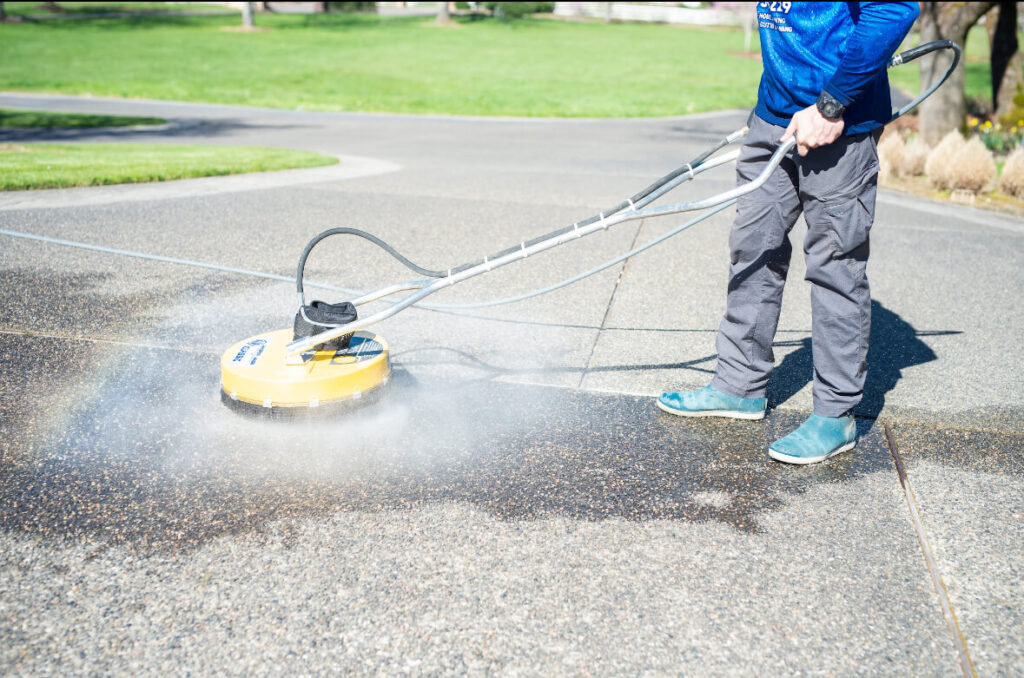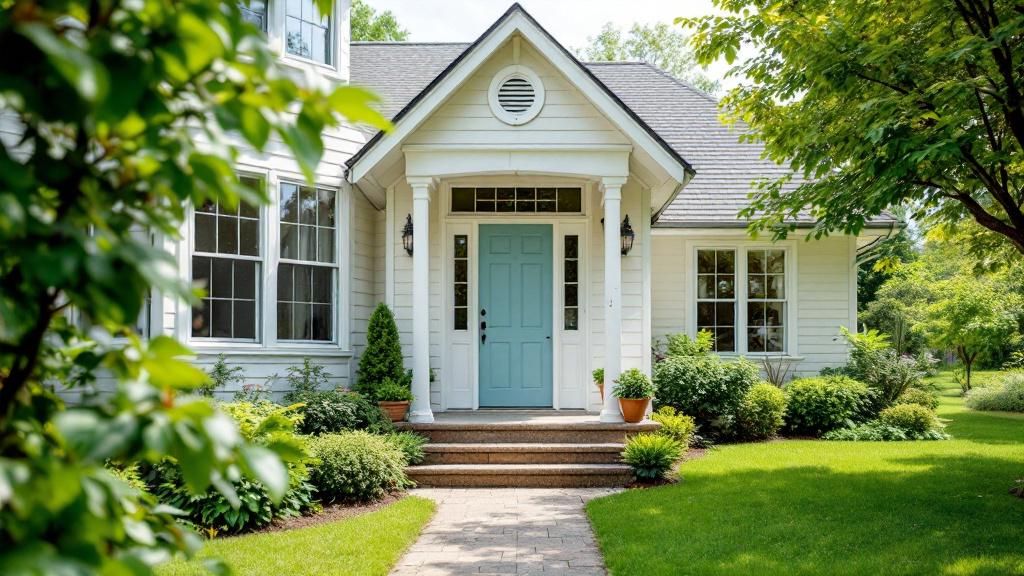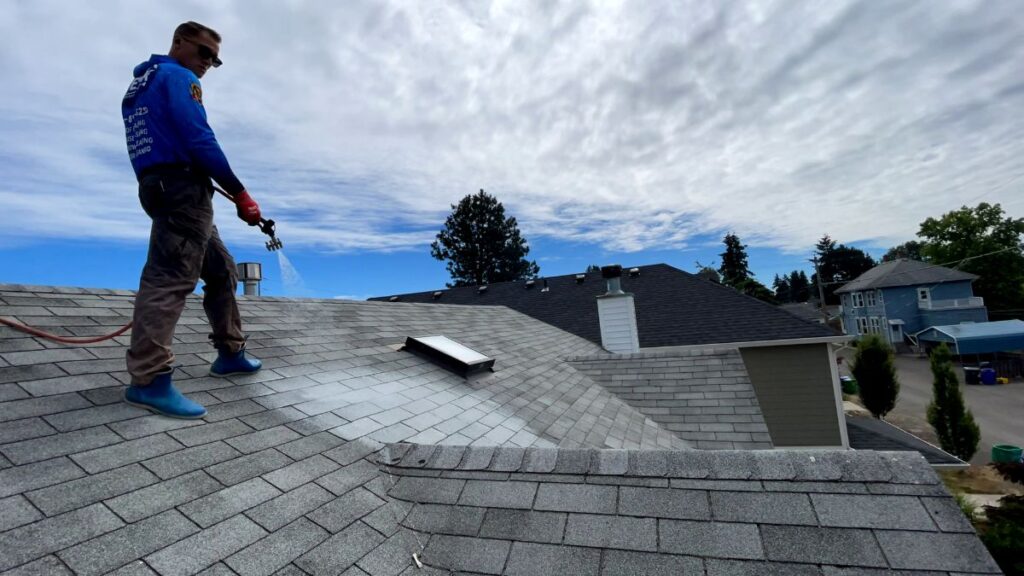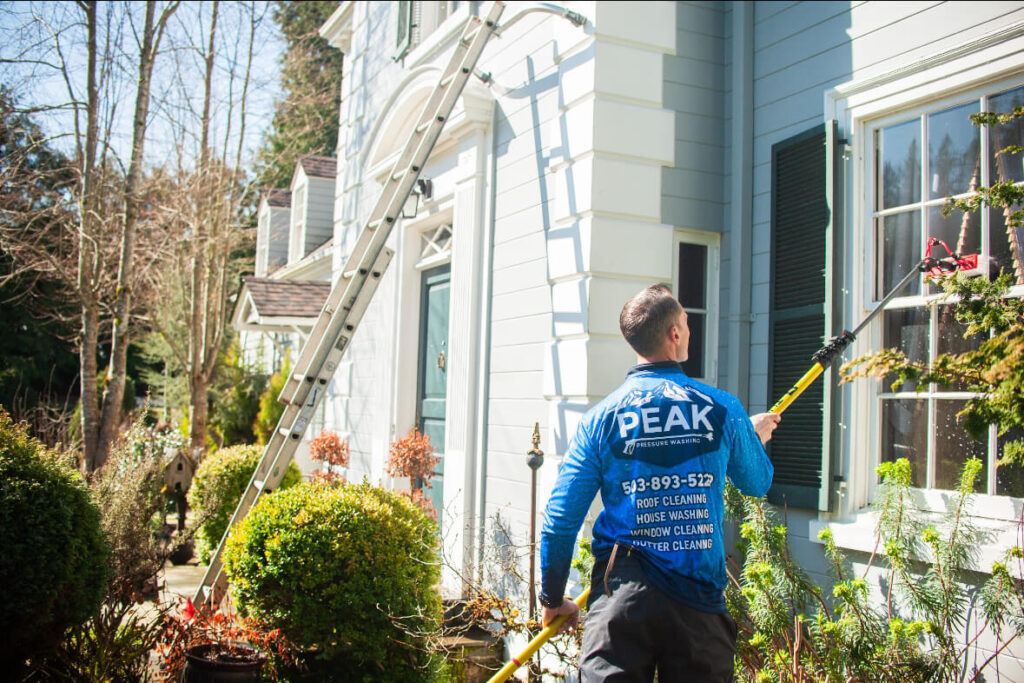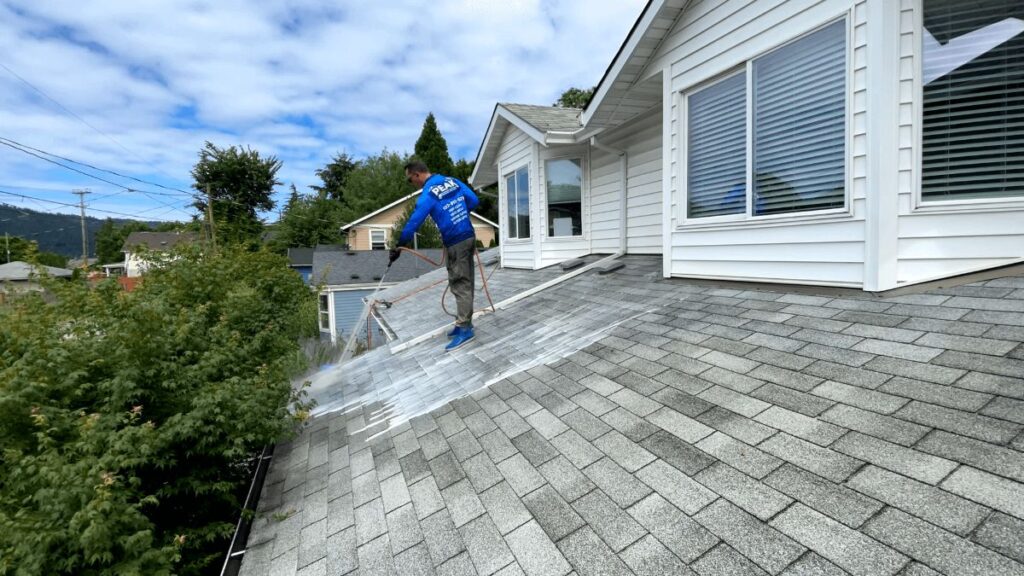How Moss Becomes a Hidden Threat to Your Home (And How to Stop It)
Key Takeaways Moss on your roof isn’t just an eyesore—it’s a red flag. If you’ve noticed fuzzy green patches forming on shingles, siding, or walkways, it’s time to act. Moss thrives in moisture-heavy environments and can lead to major damage, from roof leaks to wood rot, if left untreated. This guide cuts through the fluff and shows you exactly how to detect, remove, and prevent moss issues around your home—saving you money, stress, and structural headaches. Why Moss Is More Than Just a Cosmetic Issue Moss issues on roofs and around the home are becoming an increasingly common concern for homeowners. While that velvety green growth may seem harmless or even quaint, it’s often a sign of deeper moisture problems that can lead to costly repairs. When moss begins to take hold, it’s a sign that moisture is trapped—especially on rooftops. Over time, this can compromise the structural integrity of shingles, lead to mold growth, and even cause roof leaks. Early detection and intervention are key to preventing long-term damage. Pay attention to visual indicators such as sagging roof areas, curled or cracked shingles, or streaks and stains—these can all signal moss or algae-related issues. A regular inspection using a roof checklist and proper attic ventilation are both crucial steps in staying ahead of moss problems. Understanding the Nature and Spread of Moss Moss thrives in damp, shaded environments and can multiply quickly. In fact, under ideal conditions, moss coverage can increase exponentially every month. That means a small patch left untreated can grow more than 11 times larger within half a year. This is particularly problematic in rainy regions like the Pacific Northwest, where moss can flourish on sidewalks, fences, and rooftops. What starts out as a small patch can turn into a widespread issue, affecting not only curb appeal but also the physical integrity of your home. Peat moss, a common variety, changes soil chemistry by producing hydroxide, creating highly acidic conditions that can be harmful to surrounding vegetation. Additionally, moss contributes to biodiversity shifts and can crowd out native plant species. Common Warning Signs of Moss Problems Catching moss early can save you time and money. Be on the lookout for these signs: Visual Clues Environmental Triggers Expert-Backed Tips to Prevent Moss Growth Experts agree that prevention is the best cure. Here are some professional-backed strategies to prevent moss from becoming a problem: 1. Regular Roof and Gutter Cleaning Moss thrives on organic debris. Clean leaves and sticks from your roof and gutters at least twice a year. 2. Install Moss-Resistant Materials Consider installing metal strips or moss-resistant shingles. Zinc and copper are particularly effective. 3. Use Natural Moss Killers A diluted vinegar solution or dish soap mixed with water can help treat small patches. 4. Improve Drainage and Sunlight Exposure Trim trees to reduce shaded areas, and make sure your roof has proper drainage to avoid water retention. 5. Call in Professionals When Needed Some jobs require expert knowledge and tools. Professional pressure washing or roof cleaning services can ensure a safe and thorough job. Note: Despite moss’s pesky nature, it does have some ecological value—like trapping carbon dioxide and providing habitats for insects. That said, its place is in the forest, not your roof. How Moss Damages Roofs, Siding, and More Unchecked moss growth can lead to serious structural problems: Some homeowners have turned to preserved moss walls for aesthetic purposes—these require no light or water. While decorative moss has a place in home decor, it’s important not to confuse it with the invasive type that grows outdoors and poses risks to your property. Best Practices for Safe and Effective Moss Removal When removing moss, the method matters. Here’s how to do it right: Soft Washing (Recommended) Pressure Washing (Use Caution) Manual Removal Chemical Treatments What to Do After Removal: Long-Term Prevention Once you’ve eliminated moss, don’t stop there—prevention is just as important: Staying proactive helps you avoid future repairs and protects your property’s value. Protecting Your Investment With Smart Maintenance Homeownership comes with its share of responsibilities, and moss control is one that shouldn’t be ignored. As the weather becomes more unpredictable and wetter in certain areas, the risk of moss growth only increases. By following proven maintenance strategies and addressing small issues before they become big problems, you not only protect your home but also boost curb appeal and property value. Whether it’s an occasional vinegar rinse or a full professional cleaning, consistent care will help you stay ahead of moss-related damage. If you’re unsure where to begin or want peace of mind, Peak Pressure Washing offers expert roof and exterior cleaning services that can handle even the toughest moss problems—efficiently and safely. Frequently Asked Questions How can I tell if moss is starting to grow on my roof?Look for green fuzz or discoloration on shingles, especially in shaded areas. Early signs often appear near gutters or in corners where water tends to pool. Is moss actually dangerous to my home?Yes. Moss holds moisture against surfaces, accelerating wear and increasing the risk of leaks, rot, and structural damage. Can I remove moss myself or should I hire a professional?Small patches can be treated with natural solutions, but large or stubborn growth is best handled by professionals to avoid damage. How often should I check my roof for moss?At least twice a year—ideally after the rainy season and before winter. Inspections should also follow any major storms. What’s the best way to prevent moss from growing back?Trim trees, keep gutters clean, and install zinc or copper strips along the roofline to discourage moss regrowth.

